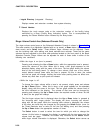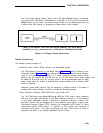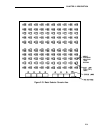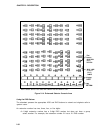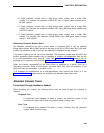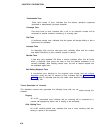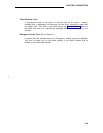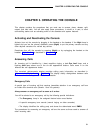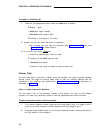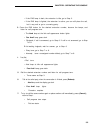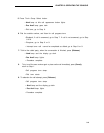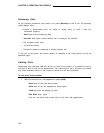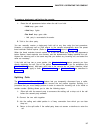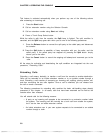
CHAPTER 3. OPERATING THE CONSOLE
CHAPTER 3. OPERATING THE CONSOLE
This chapter contains the procedures that you must use to answer, place, release, split,
extend, and hold calls. You will also apply these procedures, in whole or in part, to other
call-handling tasks such as activating some of the attendant and system features.
Activating and Deactivating the Console
Activate (turn on) the console by plugging in the handset or the headset. If the Night lamp is
lighted and you are the primary attendant, press (Night) to put the primary console and any
other daytime consoles into normal day service.
Deactivate (turn off) the console by pressing (Night) or by unplugging the handset or the
headset. (Night Service is described in Chapter 4.)
Answering Calls
An incoming call is identified by 1-burst repetitive ringing,
flashing Atnd lamp above one of the six call appearance
leftmost idle call appearance button.
a dark Pos Avail lamp, and a
buttons. Calls come in on the
The console’s alphanumeric display provides calling party information as described in
“Alphanumeric Display Area” in Chapter 2. The display clearly distinguishes between calls
from users inside the system and calls from outside.
Emergency Calls
A special type of incoming call that requires immediate attention is an emergency call from
an inside voice terminal user (Generic 1 and V3 systems).
Always answer an emergency call as soon as it arrives.
You will be alerted to an emergency call by the following special indications:
• The Emergency lamp in the assigned feature button area flashes.
• A special emergency tone sounds (normal ringing on older consoles).
• The display identifies the calling party and shows the abbreviated word EMRG.
The procedures for answering an emergency call are the same as those used to answer
other incoming calls.
all
3-1



